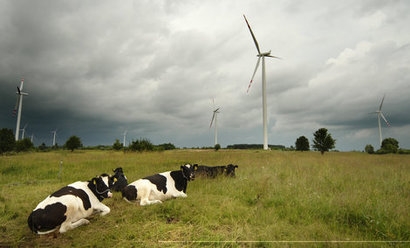
Owners and operators who are not investing in smart digitalisation strategies could be losing thousands from their operations and maintenance (O&M) budgets each year due to the cost of false alerts.
False alerts are caused by unfocused data analysis erroneously producing alerts for problems that do not exist; these are typically called false positives. This can interrupt power production as well as waste O&M budgets. On average, a 100MW wind farm can produce 200 false alerts per year, resulting in approximately £160,000 in technician labour costs, transport to turbines and lost revenue due to downtime.
“The risk around too many false positives is two-fold; firstly, it wastes time and resources to check for a fault that does not exist” said Bruce Hall, CEO of Onyx InSight. “Secondly such time wasting corrodes confidence in digital analytics and sometimes causes the operator to abandon a data analytic approach altogether.”
Nearly half (47.2 percent) of the wind industry professionals polled cited a lack of budget, resourcing or understanding as the main obstacle for implementing advanced analytics within their organisation. As a typical 100 MW wind farm can produce terabytes of data annually, it is easy for owners and operators - without the right tools and resources in place - to feel overwhelmed and fail to fully realise the value of all this data. And they are not alone. Through to 2022, an estimated 80 percent of analytic insights from all big data projects are expected to deliver no practical business outcomes.
Currently, over 50 percent of data analytics companies in the wind industry offer AI-only services assuming their machine learning algorithms will deliver significant returns by themselves. However, there are limits to the insights wind farm owners and operators can get from this data analysis approach.
“Data-only companies lack the specific engineering expertise necessary to advise owners and operators on resolving turbine issues quickly and efficiently” added Mr Hall. “Machine learning is indeed a powerful tool, speeding up decision making by drawing out subtle patterns from large datasets – but it is not a cure all. An engineer will be able to spot erroneous flags, add context to failures and reduce false alerts, bringing all of their real-world engineering experience to bear. High-quality predictive maintenance using advanced analytics combined with engineering expertise can reduce the number of false alerts by 93 percent and produce savings of up to 30 percent from O&M budgets.”
A recent trial of image fault detection conducted by Onyx InSight showed that a machine learning algorithm in isolation can identify faults with up to 88 percent accuracy. This is less accurate than a specialist engineer on their own, 89 percent, and significantly less than a machine learning algorithm in the hands of a specialist engineer, which can produce accuracy rates of 92 percent.
“In a time when wind industry professionals are under increasing pressure to run projects profitably, driving efficiencies in O&M is critical” Mr Hall said. “Data analytics has a huge role to play in improving profits and production on wind farms through predictive maintenance… but machine learning must be deployed in conjunction with engineering expertise for owners and operators to obtain the best results and therefore make the biggest impact on their O&M budgets.”
Last week, Onyx InSight released a new report ‘How Smart Digitisation will help you thrive in a post-pandemic world’ which looks at the 3 biggest obstacles to smart digitalisation in renewables – and how to solve them.
For additional information:

